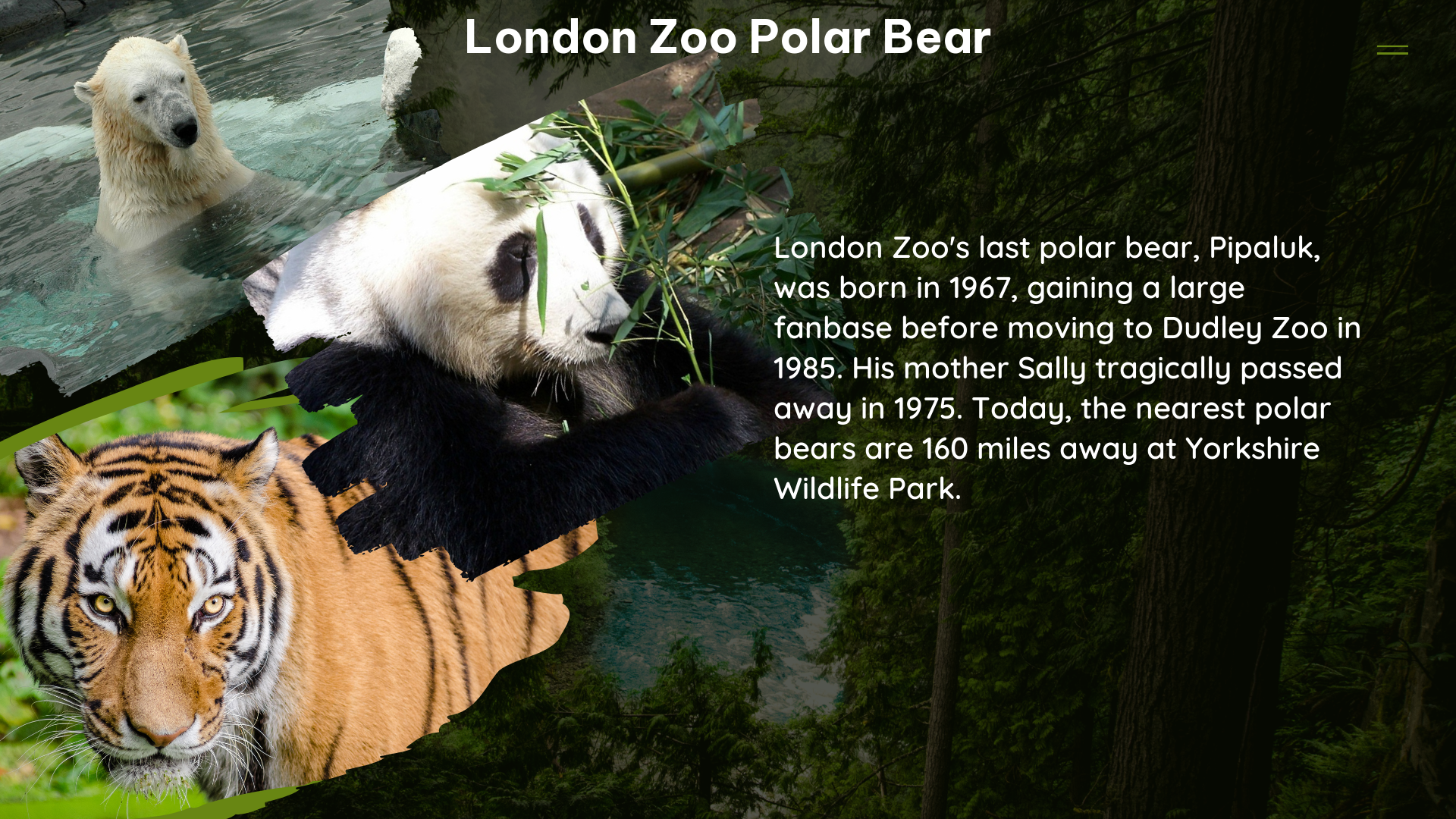The London Zoo has a rich history of housing polar bears, with Pipaluk being one of the most famous ones. Pipaluk, a male polar bear, was born at the London Zoo on 1st December 1967 to parents Sam and Sally, who had arrived from Moscow Zoo in 1960. Pipaluk was the only polar bear cub previously reared successfully at the Zoo, and his name, chosen from a list of Inuit names, means ‘the little one’.
The History of Polar Bears at the London Zoo
The London Zoo had a polar bear exhibit built in the late 1800s, which was a very old exhibit with very little room and only a small pool. The exhibit was closed in 1985, and the polar bears, including Pipaluk, were sent to other zoos. The nearest polar bears to London are now 160 miles away at Yorkshire Wildlife Park.
In addition to polar bears, the London Zoo has housed other famous animals, such as Brumas, the first baby polar bear to be successfully reared in the United Kingdom, and Winnie, an American black bear who was deposited at the Zoo in 1914 by a Canadian lieutenant at the start of the First World War.
Pipaluk: The Beloved Polar Bear of the London Zoo

Pipaluk’s parents, Sam and Sally, were named after the Zoo’s bear keeper Sam Morton and his fiancée. Pipaluk left London Zoo in 1985 when the Mappin Terraces, which housed all the bears, were closed, and died at the age of 22 years in a Zoo in Poland.
Pipaluk’s Birth and Early Life
Pipaluk was born at the London Zoo on 1st December 1967 to parents Sam and Sally, who had arrived from Moscow Zoo in 1960. He was the only polar bear cub previously reared successfully at the Zoo, and his name, chosen from a list of Inuit names, means ‘the little one’.
Pipaluk’s Legacy
Pipaluk’s story is a testament to the London Zoo’s commitment to wildlife conservation and its ability to inspire a lifelong love of animals. The Zoo has been a significant contributor to wildlife conservation and has been inspiring a lifelong love of animals for two-hundred years, influencing art, culture, and science along the way.
Other Famous Animals at the London Zoo
In addition to polar bears, the London Zoo has housed other famous animals, such as Brumas, the first baby polar bear to be successfully reared in the United Kingdom, and Winnie, an American black bear who was deposited at the Zoo in 1914 by a Canadian lieutenant at the start of the First World War.
Brumas: The First Baby Polar Bear Reared in the UK
Brumas, a female polar bear, was born at the London Zoo in 1949 and was the first baby polar bear to be successfully reared in the United Kingdom. Her birth was a significant event and attracted a lot of attention from the public and the media.
Winnie: The Wartime Bear of the London Zoo
Winnie, an American black bear, was deposited at the London Zoo in 1914 by a Canadian lieutenant at the start of the First World War. Winnie became a beloved resident of the Zoo and inspired the creation of the famous children’s book character, Winnie-the-Pooh.
The Importance of the London Zoo’s Conservation Efforts
The London Zoo has been a significant contributor to wildlife conservation and has been inspiring a lifelong love of animals for two-hundred years, influencing art, culture, and science along the way.
The Zoo’s Contribution to Wildlife Conservation
The London Zoo has played a crucial role in wildlife conservation, both through its research and its efforts to educate the public about the importance of protecting endangered species. The Zoo has been at the forefront of many conservation initiatives, including the reintroduction of species to the wild and the development of captive breeding programs.
The Zoo’s Impact on Art, Culture, and Science
The London Zoo has also had a significant impact on art, culture, and science. The Zoo’s animals have been the subject of countless works of art, and the Zoo has been a source of inspiration for writers, filmmakers, and scientists alike. The Zoo’s research has also contributed to our understanding of animal behavior and ecology, and has helped to inform conservation efforts around the world.
Conclusion
The London Zoo’s history of housing polar bears, including the beloved Pipaluk, is a testament to the Zoo’s commitment to wildlife conservation and its ability to inspire a lifelong love of animals. The Zoo’s impact on art, culture, and science is also undeniable, and its legacy will continue to be felt for generations to come.
References:
– Pipaluk the Polar Bear
– Does London Zoo Have Polar Bears?
– Polar Bears Old Exhibit London Zoo
– Famous Animals at London Zoo
